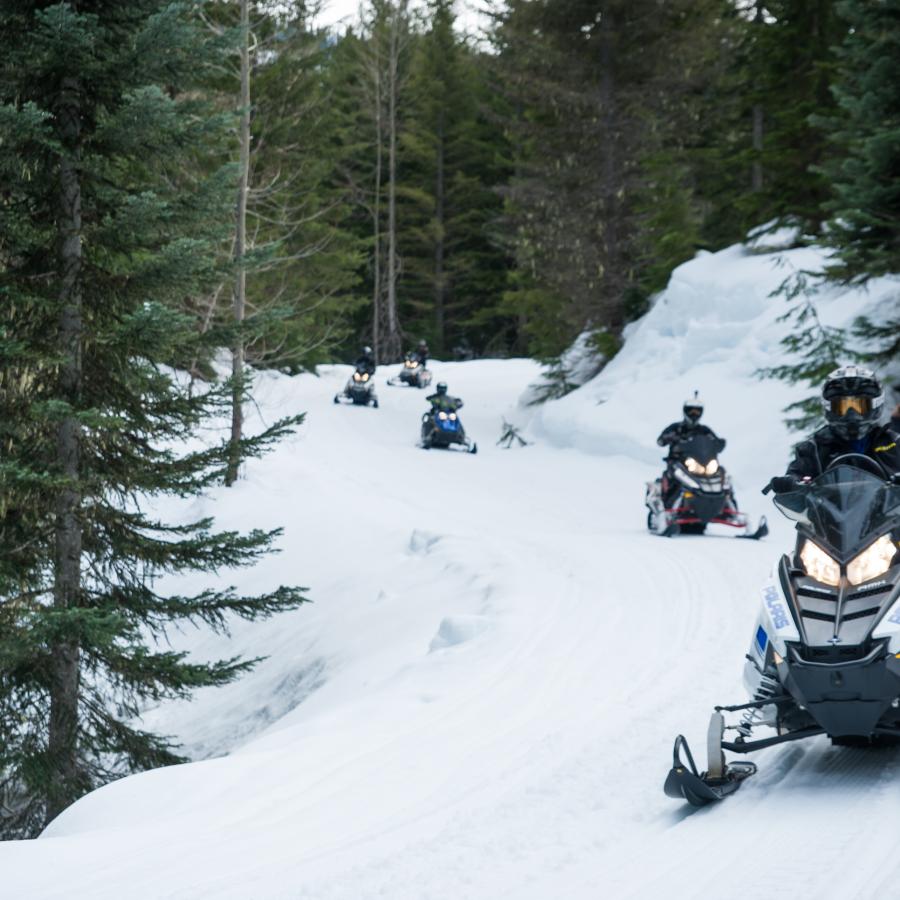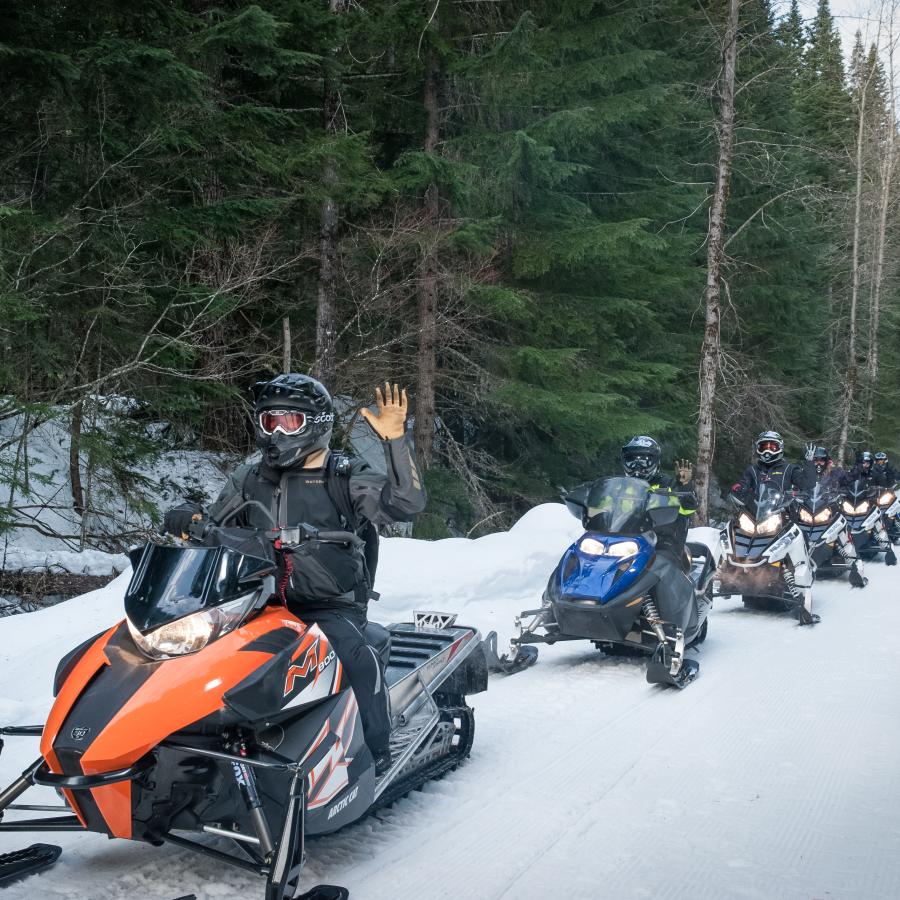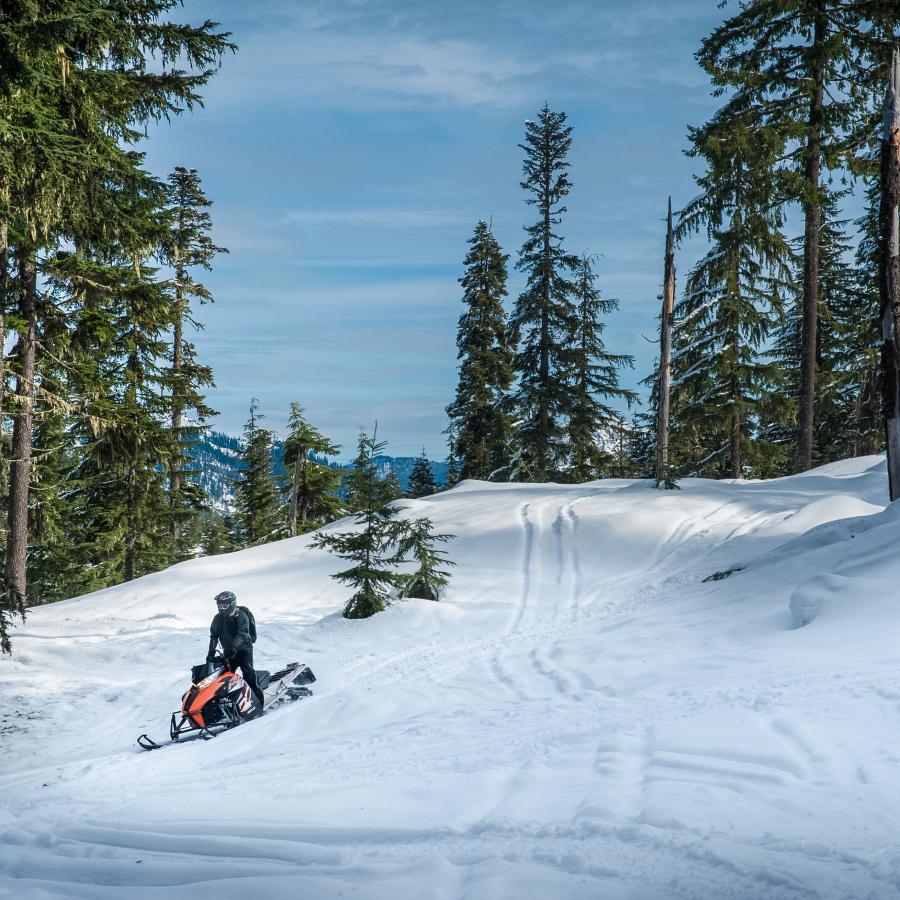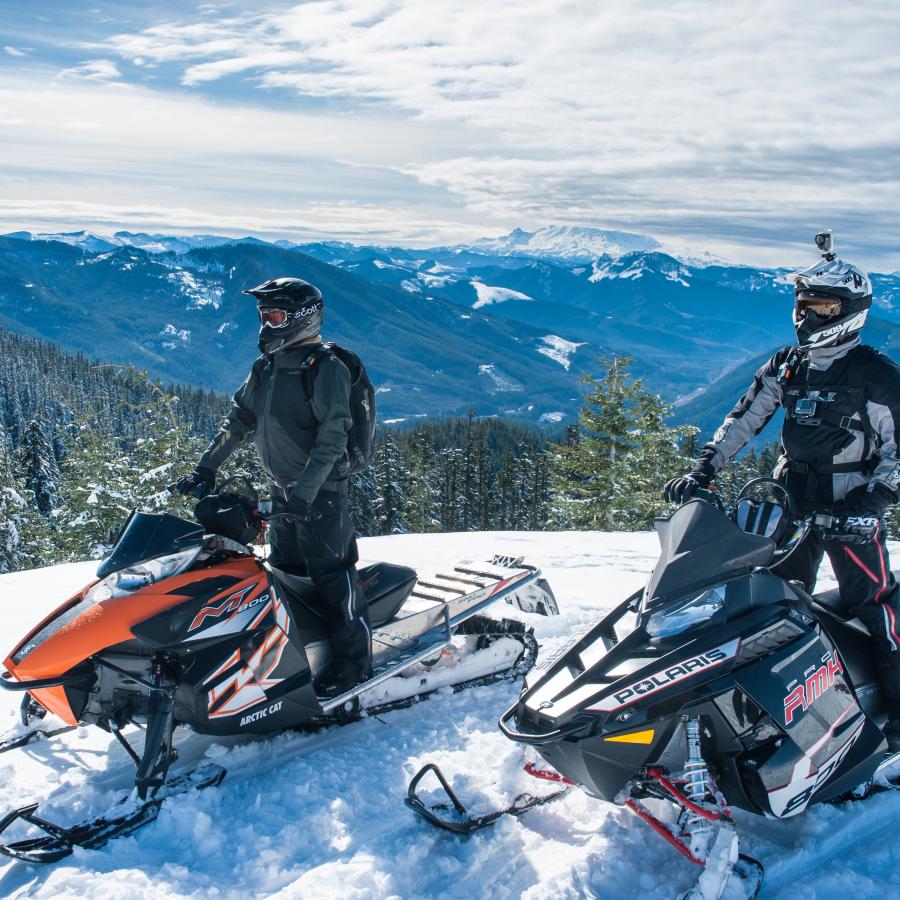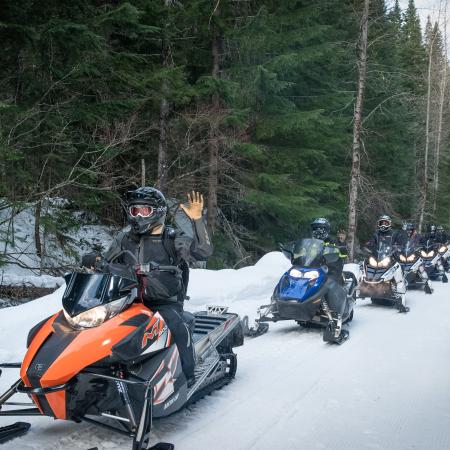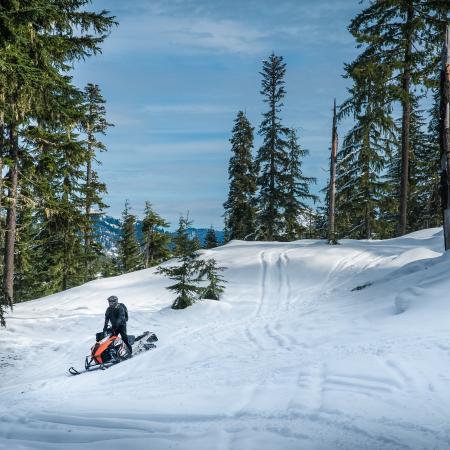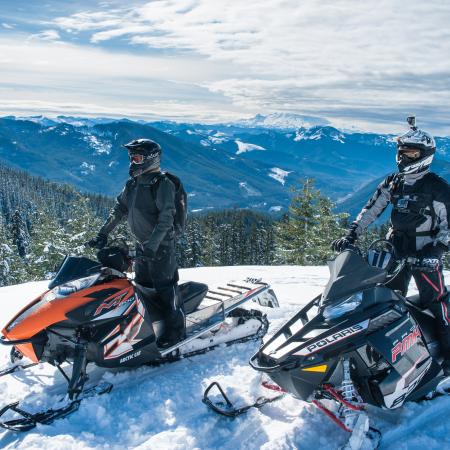Snowmobiling
Snowmobiling is one of the state's most popular winter activities. More than 3,000 miles of groomed trails are provided through the Winter Recreation Program, in cooperation with federal, county, and local agencies, ski areas, snowmobile clubs, and private landowners.
The Winter Recreation Program provides Sno-Parks, cleared parking areas for vehicles in close proximity to groomed and/or backcountry trails. There are two types of Sno-Parks, those for snowmobiles and those for non-motorized sports. A handful offer both types of activities.
Rules & safety
Age restrictions and Safety Certification Course
Children under age 12 may not operate a snowmobile on or across a public roadway or highway. Children ages 12 to 16 must pass the snowmobile safety education course and carry the certificate of successful completion with them when operating a snowmobile. Youth who operate a snowmobile under the direct and present supervision of a qualified adult need not show the certificate.
Persons 12 years of age and older who successfully complete the snowmobile exam will receive a snowmobile safety patch and a snowmobile safety certificate permitting operation. For information on where to take the course, call the Winter Recreation Program at (360) 902-8684.
Complete rules
View the complete snowmobiling rules in the Revised Code of Washington.
Trail tips
When enjoying the trails on your snowmobile, remember to:
- Ride at a reasonable and prudent speed relative to existing conditions and other trail uses.
- Use the buddy system for safety. Never snowmobile alone! In case of an accident or machine failure, that second machine and rider may be your only means for a safe return. Before you go, notify someone of where you are headed and when you expect to be back.
- Use your lights between dusk and dawn.
- Obtain permission from landowners before entering private property.
- Respect non-motorized sports trails marked with cross-country ski signs or blue diamonds. Snowmobile traffic ruins cross-country ski tracks.
Do not:
- Ride under the influence of alcohol or drugs.
- Ride in a manner that would endanger lives or property.
- Harass or endanger wildlife. Protect winter wildlife populations by viewing animals from a distance, maintaining a constant speed, and staying on your snowmobile when animals are present.
- Enter designated Wilderness Areas.
Getting started with Snowmobiling
Sno-park Permit & Snowmobile Registration
All snowmobiles must be registered through the Washington State Department of Licensing (DOL) or a licensing agent except:
- Snowmobiles owned and operated by the United States, another state, or a political subdivision thereof.
- A snowmobile owned by a resident of another state or Canadian province if that snowmobile is registered under the laws of the state or province in which its owner resides. This exemption applies only to the extent that a similar exemption or privilege is granted under the laws of that state or province. Any snowmobile that is validly registered in another state or province and that is physically located in this state for a period of more than fifteen consecutive days is subject to registration under this chapter.
Snowmobile registrations are valid Oct. 1 - Sept. 30. The fee is $50 and includes one Sno-Park permit (a vehicle parking permit required at designated Sno-Parks) for each registered snowmobile.
The Sno-Park permit must be affixed to the towing vehicle on the inside of the windshield (driver's side) in the lower left corner, whenever the towing vehicle is parked in a designated Sno-Park. The fee also includes one decal, which must be affixed to the snowmobile on the left side of the cowling.
Snowmobile rental
For information on where to rent a snowmobile, call the Washington State Snowmobile Association at 800-784-9772.
Map & visitor guide
Use the Find a Park Page to see maps and visitor guides for a specific park.
